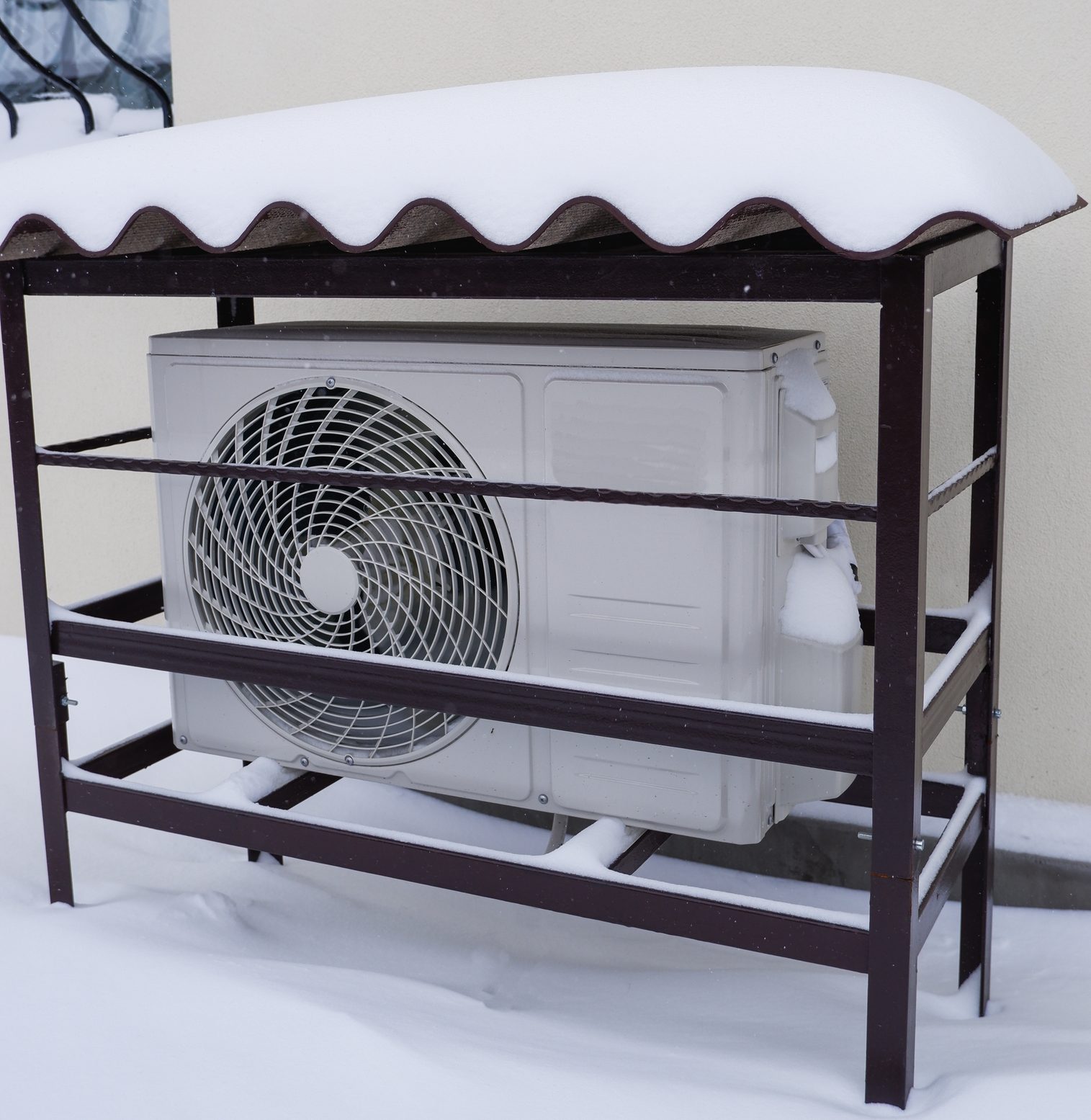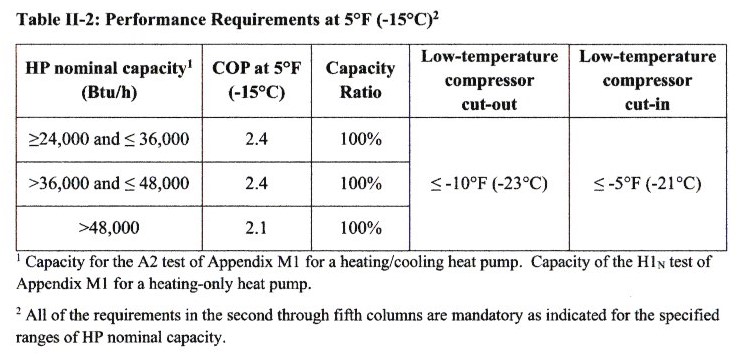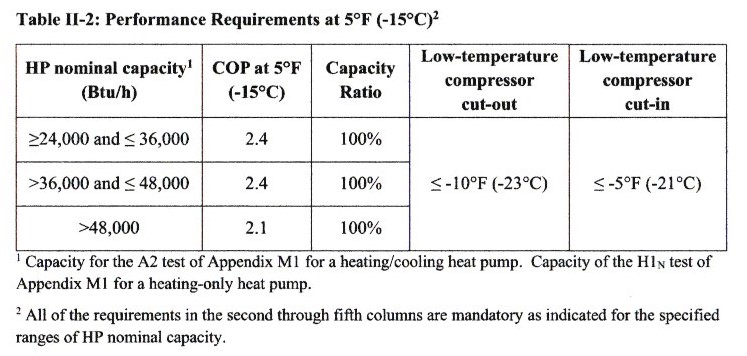Cold Climate Heat Pumps

By: Gary B. Xavier | Jul 06, 2022
In the northern climates, the use of heat pumps has been limited since their introduction several decades ago. Air-source heat pumps rely on the temperature of the outdoor air to remove heat, with problems initiating as ambient temperatures near the freezing point. As the outdoor air temperature drops, it is more difficult to remove heat from the air, causing the heat pump to work harder, resulting in higher electrical consumption and lower efficiency.
When the temperature of the outdoor air nears 32°F (0°C), water vapor in the air begins to freeze on the outdoor coil, resulting in a dramatic decrease in air flow across the coil. The unit must then defrost the coil to continue to provide heat transfer.
Newer technology has improved the performance of the air-source units, with some manufacturers now producing equipment that will perform into the sub-zero degree Fahrenheit range.
Measuring Heat Pump Efficiency
When heat pumps are working in the heating mode, their efficiency is measured by the Heating Seasonal Performance Factor (HSPF). The HSPF represents the relationship of the total amount of heat delivered in Btus (British thermal units) to the amount of energy consumed in kilowatt hours (kWh). The higher the HSPF, the more efficient the unit.
Coefficient of Performance (COP) is another metric used to show a heat pump’s efficiency in the heating mode. It is a ratio of the amount of heat transferred in Btus to the amount of energy consumed in kilowatts. A COP of 1 would indicate that it took 1 kW to move 1 Btu. Obviously, the higher the COP, the greater the efficiency of the unit.
To convert from HSPF to COP, multiply the HSPF by 0.293. For example, a heat pump with a HSPF of 9 would have a COP of 2.637 (9 x 0.293 = 2.637).
The United States Department of Energy (USDOE) minimum HSPF currently is 8.2, but it is slated to increase to 8.8 in 2023. This represents a long-standing progression of increasing efficiency, beginning with a HSPF of 6.8 when the standard was first established in 1992.
The Cold Climate Challenge
As the world attempts to transition from the use of fossil fuels for space heating, heat pumps are a logical choice for heating and cooling a living space. The challenge is to develop a reliable, efficient air-source heat pump that will work in colder climate zones such as the Upper Midwest and Northeast of the United States, minimizing the necessity of a fossil-fueled back-up heating system.
Several cities in the country have either enacted, or propose to enact, regulations banning the use of fossil fueled heating systems in new residential construction. As a result, electric heat pump systems will be required in these locations, as a back-up gas or oil-fired appliance will not be allowed.
Thus, the challenge to the manufacturers of heating and cooling equipment: develop heat pumps that will work efficiently at sub-zero temperatures while increasing heating capacity.
The USDOE has developed standards for cold climate heat pumps (CCHP) and has challenged manufacturers to develop systems that will meet these standards.
According to the USDOE:
“The CCHP Technology Challenge is focused on residential, centrally ducted, electric-only HPs.”
- The Challenge has two segments: one for a CCHP optimized for 5°F (-15°C) operation and the other for a CCHP optimized for -15°F (-26°C) operation.
- Challenge submissions are limited to models that meet the following criteria:
- Have a nominal cooling capacity (or nominal heating capacity for a heating only HP) greater than or equal to 24,000 Btu/h and less than or equal to 65,000 Btu/h;
- Meet all the challenge specification requirements;
- Comply with all applicable federal and state standards, regulations, and laws governing these types of HPs, including compliance with all safety and environmental standards.


In addition to meeting the requirements for efficiency, the cold climate heat pumps will be required to use refrigerants that are considered to have a low-GWP (Global Warming Potential). To comply with the challenge, the refrigerant used must have a GWP of no more than 750, as measured per American Society of Heating, Refrigerating and Air-conditioning Engineers (ASHRAE) fundamentals, based on 100-year Intergovernmental Panel on Climate Change (IPCC) GWP values.
By comparison, common refrigerants such as R-410A and R-134a have a GWP of 1,725 and 1,430 respectively, as compared to carbon dioxide (CO2), which has a GWP of 1.
The Future
While it is nearly impossible to predict how advances in air-source heat pump technology will mitigate climate change, geothermal heat pump systems can also provide a means of decreasing greenhouse gas emissions. While more costly to build and install, using the ground as both a heat source and heat sink is a proven, reliable means of conserving energy.
From a commercial/industrial standpoint, there are also other means of heating and cooling that conserve energy while minimizing environmental impact, such as thermal ice/water storage and solar and wind power.
The DOE Cold Climate Heat Pump Challenge has been accepted by a half dozen major manufacturers of HVAC systems and equipment, including Trane, Johnson Controls, Lennox, Mitsubishi, and Carrier. As they develop new systems to meet this challenge, the future of residential heating will certainly look quite different than it does today.

